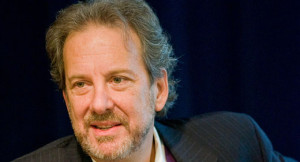Understanding ISIS the key to combating it
“Mindless terrorists”, “barbaric automatons” and “suicidal irrationality” are some of the media headlines that have been used to explain the horrific terror attacks in Paris last Friday.
They convey the idea that ISIS is an almost random, senseless organisation bent on gratuitous violence.
But the truth about ISIS is much more complicated and much more troubling.
Franco-American anthropologist Scott Atran says the fearful reaction on the streets of Paris the attacks provoked are precisely what ISIS planned and hoped for.
“The greater the reaction against Muslims in Europe and the deeper the west becomes involved in military action in the Middle East, the happier ISIS leaders will be. Because this is about the organisation’s key strategy: finding, creating and managing chaos,” says Mr Atran, who is Director of Research in Anthropology at the Centre National de la Recherche Scientifique in Paris and a Senior Research Fellow at Oxford University.
He says that ISIS operate from a textbook or manifesto written a decade ago by a man called Abu Bakr Naji, a member of the Mesopotamian wing of al-Qaida that would later become ISIS.
Titled ‘The Management of Savagery/Chaos’ the text has some recurring themes:
‘Hit soft targets’.
“Diversify and widen the vexation strikes against the crusader-Zionist enemy in every place in the Islamic world, and even outside of it if possible, so as to disperse the efforts of the alliance of the enemy and thus drain it to the greatest extent possible,” it says.
‘Strike when potential victims have their guard down. Sow fear in general populations, damage economies’.
“If a tourist resort that the crusaders patronise … is hit, all of the tourist resorts in all of the states of the world will have to be secured by the work of additional forces, which are double the ordinary amount, and a huge increase in spending,” the text says.
‘Appeal to young converts’.
“Capture the rebelliousness of youth, their energy and idealism, and their readiness for self-sacrifice, while fools preach ‘moderation’ (wasatiyyah), security and avoidance of risk,” it says.
‘Target the US through its allies and proxies’.
“Work to expose the weakness of America’s centralised power by pushing it to abandon the media psychological war and the war by proxy until it fights directly,” the text says.
Mr Atran says ISIS has a recruitment strategy which refers to ‘The Grey Zone’ which describes the twilight area occupied by most Muslims between good and evil. It exhorts Muslims to “bring division to the world and destroy the grey zone between the caliphate and the infidel”.
The attacks in Paris were the latest instalment of this strategy, targeting Europe, as did the recent attacks in Turkey. There will be more, much more, to come, says Mr Atran, Author of ‘Talking to the Enemy: Violent Extremism, Sacred Values, and What it Means to Be Human’.
“Radical Arab Sunni revivalism, which ISIS now spearheads, is a dynamic, revolutionary countercultural movement of world historic proportions, with the largest and most diverse volunteer fighting force since the second world war.
“In less than two years, it has created a dominion over hundreds of thousands of square kilometres and millions of people. Despite being attacked on all sides by internal and external foes, it has not been degraded to any appreciable degree, while rooting ever stronger in areas it controls and expanding its influence in deepening pockets throughout Eurasia,” Mr Atran says.
He says simply treating ISIS as a form of terrorism or violent extremism does not fully explain the menace it threatens.
“Merely dismissing it as nihilistic reflects a wilful and dangerous avoidance of trying to comprehend, and deal with, its profoundly alluring moral mission to change and save the world,” Mr Atran says.
He says suggestions that ISIS seeks to turn back history to the Middle Ages is dangerously wrong-headed and that ISIS is seeking to fill the void wherever a state of chaos exists.
“It conscientiously exploits the disheartening dynamic between the rise of radical Islamism and the revival of the xenophobic ethno-nationalist movements that are beginning to seriously undermine the middle class – the mainstay of stability and democracy – in Europe in ways reminiscent of the hatchet job that the communists and fascists did on European democracy in the 1920s and 30s.” Mr Atran says.
“The fact that Europe’s reproductive rate is 1.4 children per couple, and so there needs to be considerable immigration to maintain a productive workforce that can sustain the middle class standard of living, is a godsend for ISIS, because at the same time there has never been less tolerance for immigration. Therein lies the sort of chaos that ISIS is well positioned to exploit,” he says.
Mr Atran has testified to the US Senate armed service committee and before the United Nations Security Council saying that what inspires ISIS are not so much religious teachings but a thrilling cause that promises glory and esteem.
“Jihad is an egalitarian, equal-opportunity employer: fraternal, fast-breaking, glorious, cool – and persuasive,” he says.
He said current counter-radicalisation approaches lack the positive, empowering appeal of ISIS’s view of the world; and the personalised approach to individuals across the world.
“The first step to combating ISIS is to understand it. We have yet to do so. That failure costs us dear,” Mr Atran said.
Laurie Nowell
AMES Australia Senior Journalist













